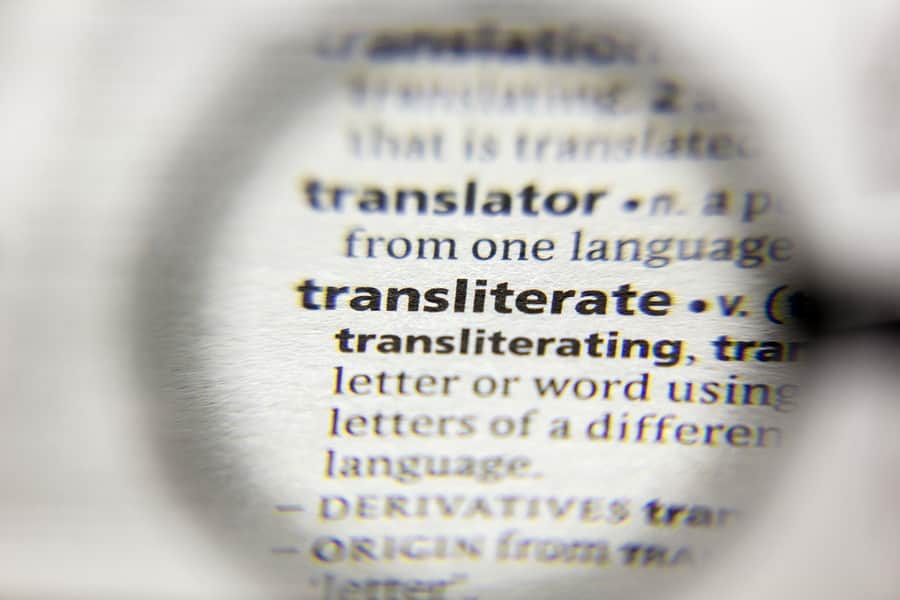Blog
Olympic Games Tokyo 2020 State of The Art Translation Tools
onOctober 9, 2019
Japan has been made famous for its high-tech development which is set to make its presence at the fast approaching 2020 games. The sort of technology which will be visible is the availability of multilingual translation tools. This enables all language speakers the chance to understand what is going on in this key international event. In addition there is expected to be driverless taxis and robotic helpers. The 2020 Games offers an opportunity for ...
View MoreDigital Content Translation for the Visually Impaired
onOctober 2, 2019
Disabled people and in particular those who are visually impaired require translation just as much as anyone else. These days, in the U.S. at least, companies that take on government contracts are required to deliver translations of digital documents that match the requirements for the visually and hearing impaired. These are characterised as digital content translations under Section 508.
How Section 508 is linked to translation and localization.Today more than 20 percent of web users have ...
View MoreMeeting the Translation Needs of International Companies
onSeptember 24, 2019
As more and more companies seek international customers in order to reach their dreams of becoming key global players in their industry they have to do just a little more than simply advertise their products to overseas markets. In order to be competitive, it needs to communicate and market its company in a language its customers will understand. Communication barriers can be disastrous for any growing company. The best way forward is to get all ...
View MoreWhat is the Difference Between Creative Translation and Literal Translation?
onSeptember 17, 2019
When it comes to translation, accuracy is often the primary goal. However, there are instances when translators are asked to produce creative translations, which involve using their skills to create something new. In this blog post, we will explore the differences between creative translation and literal translation, and understand the unique aspects of each approach.
When any type of document is translated, typically the requirement is that an accurate translation becomes the end product. This ...
View MoreWhy Translation is Vital to Public Health?
onSeptember 10, 2019
Most countries run public health campaigns on a variety of health issues, especially when it improves public health outcomes. The campaigns may appear as large posters on billboards, positioned in places which are most visible to the public; television and radio advertising, internet posts or on leaflets circulated in libraries or other public areas where people pass through regularly. What is changing about this sort of public health initiative is the ethnic and linguistic composition ...
View MoreHow Does Modern Healthcare Benefit From Translation and Interpreting Services?
onSeptember 3, 2019
Medical translation and interpreting is a specialised profession in which there cannot be any leeway or complacency when it comes to accuracy. A mistranslated or misinterpreted word or phrase can literally cause someone’s death. Modern healthcare today is more or less totally reliant on translation and interpreting services. Here are some of the more important reasons why this is so.
Populations are much more multilingual than ever beforeMulticultural populations need effective healthcare translation and interpreting ...
View MoreTips To Improve Interpreting Skills
onAugust 27, 2019
Interpreters have a unique role in international or interlinguistic communication. They must not only know their two or more languages extremely well, but they must also develop an ability to deal with a specific set of linguistic demands. Interpreters who work as business interpreters have a different set of challenges than those who work in a hospital setting or a courtroom. Interpreting is not a static career. There is ...
View MoreDo Translated Documents Need to be Notarized, Certified, or Both?
onAugust 20, 2019
Often when you have an important document that needs to be translated you are asked to give proof that you have used a fully qualified translation service to do the job. There are two ways you can use to prove you have an official translation. One way is getting a certified translation while the other is asking for a translation to be notarized. Both of these have different characteristics that you need to consider ...
View MoreThe Meaning of Transliteration
onAugust 12, 2019
Transliteration is the term used to describe the process of converting a language from one unique writing system to a different one. Many languages such as Russian and Bulgarian use the Cyrillic alphabet, while Japanese uses Kanji and Hindi and Nepali share a script called Devanagari. What transliteration does is covert these scripts into Latin letters. It doesn’t actually translate the meanings.
What often Happens in a Chinese Restaurant?If you go into a Chinese restaurant ...
View MoreWhat are the Benefits of Language Translation and Interpreting?
onAugust 6, 2019
Translation and interpreting are often misunderstood as the same thing, but they serve different purposes. Interpreting involves listening to speakers in one language and interpreting their words into another language, while translation focuses on translating written content from one language to another. Interpreting can also extend to sign language interpretation.
There are two main branches of interpreting:
Simultaneous InterpretingSimultaneous interpreting involves the interpreter speaking almost simultaneously with the speaker. It requires quick ...
View More
















